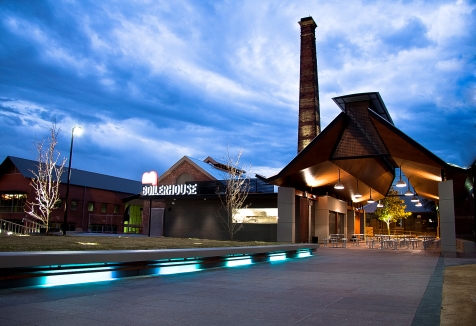Building masterpieces

Photo courtesy of Phillip Khoury.
It's seen orphaned children and psychiatric hospital patients cross its path, but today the Boilerhouse is a bustling restaurant with UWS students and staff and the public dining within its walls. Its history is long and remarkable – in fact, an explosion on-site marked its fall into disrepair – and it was once a working heating facility for the asylum. You could be forgiven for thinking this a falsity today, as the Boilerhouse is now a beautiful building that recently won a prestigious award: the Master Builders Australia (MBA) award for Best Adaptive Re-Use of a Historic Building (Under $5 Million).
The building also won the ACUMA 2012 award for the Best Refurbished Facility and was shortlisted in the World Architecture Awards in the New and Old category.
"The transformation of the UWS Boilerhouse is an exciting combination of new and old," says Alex Kibble, Managing Director of Tanner Kibble Denton Architects, the firm charged with the restoration of the site. "The project introduced a new physical presence: it is not historic nor is it overtly contemporary yet it makes a new statement of university life." The building features exposed brickwork and restored artefacts, such as old boilers and pipework that have been fashioned into artworks by local artist, Philip Spark.
Over at Hawkesbury campus, a ground-breaking research facility for the Eucalyptus Free Air Carbon dioxide Enrichment (EucFACE) experiment won the MBA's Excellence in Environmental Management (Up to $20 Million) award.
The largest CO2 experiment in the southern hemisphere, EucFACE was built to study what happens to Australian bushland when exposed to high levels of carbon dioxide. The construction and design, overseen by Capital Works and Facilities, involves six fibreglass-and-steel ring structures 28m high and 25m in diameter. "We want to determine how future high CO2 conditions affect the things that live in the woodland ecosystem – from microbe and cell to large trees to the whole system – to help us manage and cope with the coming increases in atmospheric CO2," says Professor David Ellsworth from the Hawkesbury Institute for the Environment.
The creation of the EucFACE site was not without its challenges, as both the experiment and environment were to be carefully considered, including the need for the structure to be capable of emitting CO2 into the woodland, the ability to collect data and the structure had to reach over the native trees without damaging them. Tree-cutting, digging and damage to the soil were to be minimised.
"We're honoured to see the design and construction of EucFACE recognised," says David.
Congratulations to everyone involved in the development and construction of these projects, including Capital Works and Facilities, the Hawkesbury Institute for the Environment and uwsconnect.
Visit the Boilerhouse Restaurant to find out what's on the menu or for more about the awards and history of the site. For more information about EucFACE, visit the EucFACE webpage (opens in a new window).
Mobile options:

